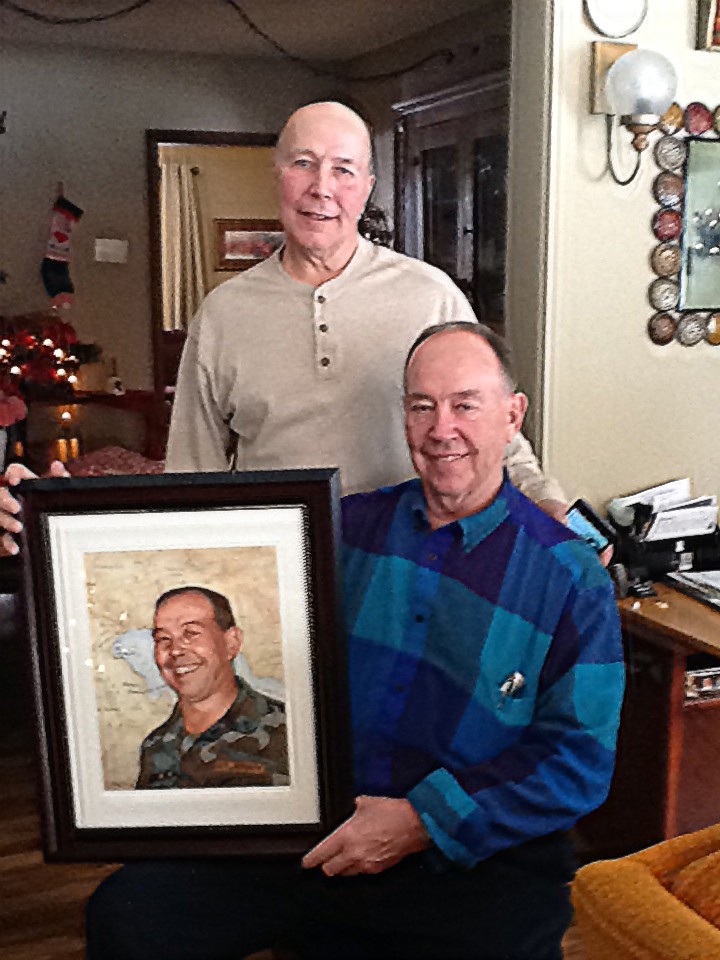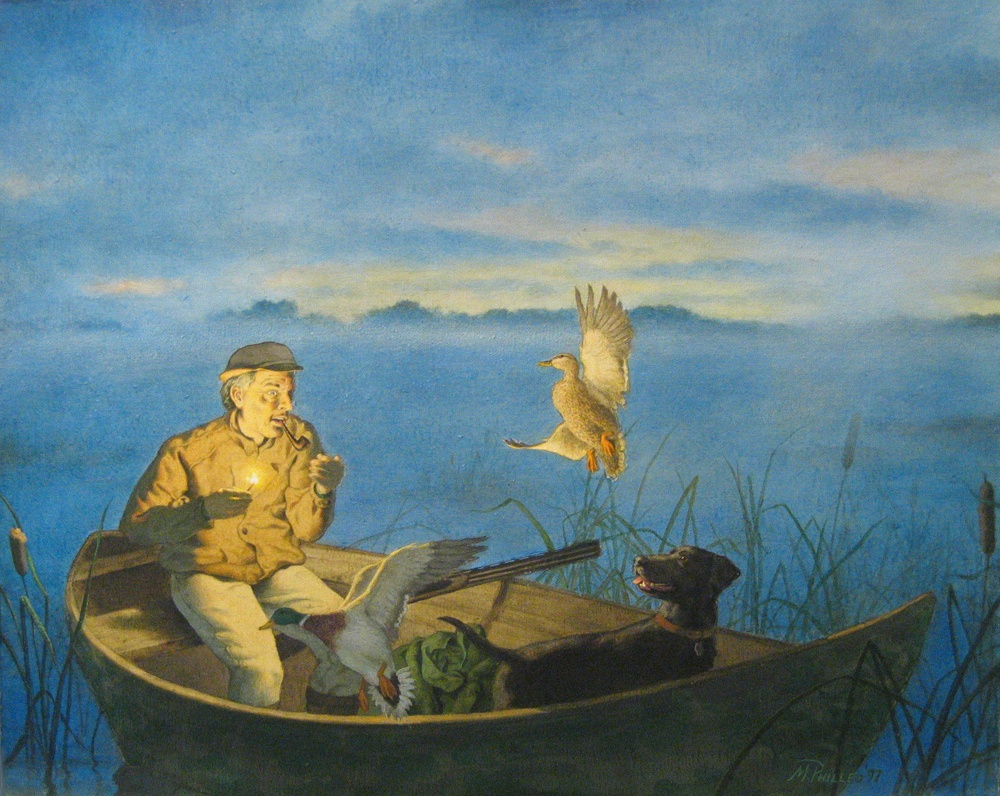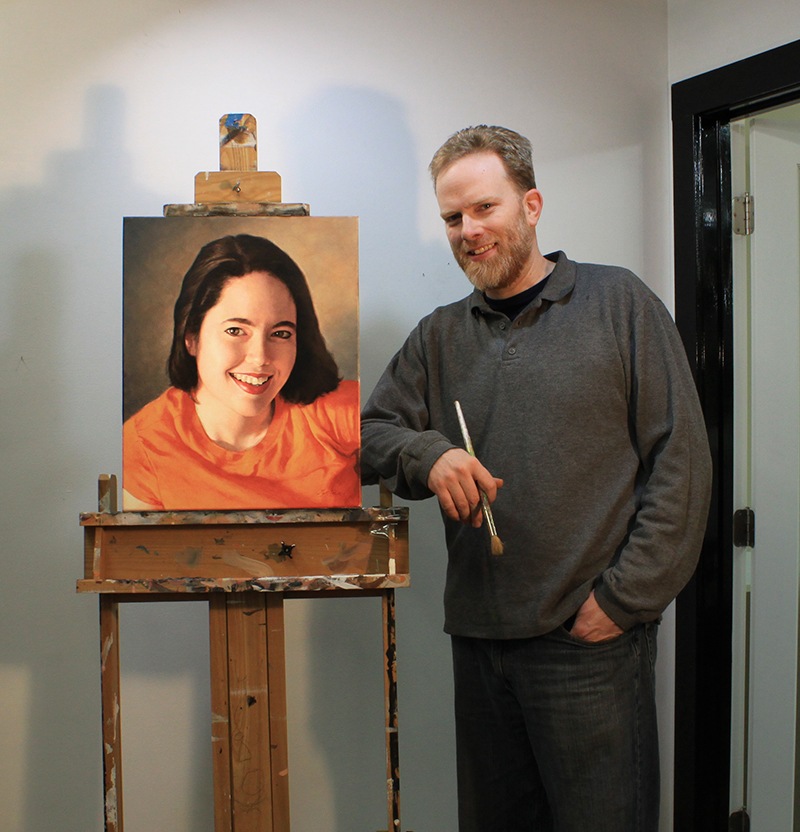- You are here:
- Home »
- Blog »
- Encouraging Thoughts »
- Paint Your Best Portrait Ever in 2018!

Paint Your Best Portrait Ever in 2018!
2017 is over. 2018 is underway. We’ve already begun to make our resolutions.
Losing weight, quitting smoking, exercising–so many fun things to choose from.
I don’t know if you’ve resolved to paint your best portrait ever in 2018, but it would be a fantastic thing to achieve wouldn’t it?
And a lot more enjoyable.
Imagine that you just painted a realistic portrait you’re really proud of. You show it to your family and friends, and they are amazed at what you created. Maybe you even give it as a gift, and the person who gets it is speechless. Wow. That would be amazing.

Acrylic on canvas portrait of a gulf war veteran, by Matt Philleo
Where Do You Start?
There’s a lot of tips, techniques, tutorials, time-lapse videos that show many different ways to paint. Some of it is worth reading and watching. Some of it will lead you down a wrong path.
Much of the advice out there is based on oil painting or drawing techniques and just doesn’t apply to acrylic. There are some teachers who paint in acrylic very well, but they teach everything–portraits, landscapes, still lifes, abstracts, impressionism, surrealism, cubism, youcandoanythingism–so much, that you just get bogged down and confused on what to do.
I’d like to cut through all of that.
I’ve been painting portraits in acrylic since 1993, when I was still in high school.
Acrylic was hard to figure out at first. It dried so fast. How do you mix the colors? And mediums? So many to choose from, and what will they do to my painting?
The hardest part to figure out was how I could do a detailed sketch and then not obliterate it with paint. I mean, as soon as you touch the brush to the canvas, the graphite starts smearing and it looks terrible! Not to mention, the details are all covered up, so how can you keep the likeness in tact…so that the portrait looks like the person you’re trying to paint when you’re all done?
Needless to say, I was a bit over my head and very confused.
Then I went to a summer art camp at the University of Wisconsin-Green Bay, and that changed everything for me. I learned the glazing technique from instructor Norbert Kox, and it opened up a new world of possibilities in acrylic painting!
Here is one of my very first acrylic paintings done with the glazing technique, back in 1997…

“Morning Burst,” painting by Matt Philleo, acrylic on canvas, 1997
I learned that you can slowly glaze over your sketch with several faint, translucent layers of paint. The sketch can always be seen until the very end. What’s more, the light shines through, going through the layers of paint, reflecting off the white canvas beneath and back to your eye.
The painting almost glows.

Matt Philleo, artist, in his studio, posing next to a portrait of his wife, 16″ x 20″ acrylic on canvas, painted in 2017.
This is how the Old Masters created their masterpieces over 400 years ago. It is with that same technique, with a few modifications, that I plan to teach you through this site. My goal, this year, is to fill Realistic Acrylic Portrait School with a ton of useful information on how to paint lifelike acrylic portraits that I’ve learned from over 25 years of painting…from one artist to another.
LEARN MORE
- Sketching Your Painting Accurately
- Beginning a Pet Portrait in Acrylic
- The Mystery of Realism in Painting
- Apply A Burnt Sienna Glaze to a Portrait
- Learn How to Sketch a Portrait Freehand in 45 Minutes
- Adding highlights to your acrylic painting
- 5 Excellent Reasons to Use Aluminum Foil
- Paint Realistic Wrinkles in Acrylic
- Painting Clothing in an Acrylic Portrait
- Paint a Cloudy Sky Acrylic
- How to add Semi-Opaque Highlights
- How to Enhance the Contrast in Your Acrylic
- How to Add Glaze to Your Acrylic Painting
- Paint Realistic Reflections on Eyeglasses in an Acrylic Portrait
- Build Up Depth on Your Acrylic Portrait Backgrounds
- How Do You Do Layers With the Glazing Technique?
- Learn How to Paint Wrinkles in Acrylic
So, sign up for my free personal email tips and guidance below, grab a brush and some paint, and let’s do this!
Sign up for my personal tips2018 can be your year to create the best portrait you’ve ever done.
All the best,

P.S. Did you find this post helpful or encouraging? If so, send it on ahead! Let others know with the share buttons below. I’d love to hear your comments. Thank you so much!
